Home>Storage Ideas>What Is The Marie Kondo Method?
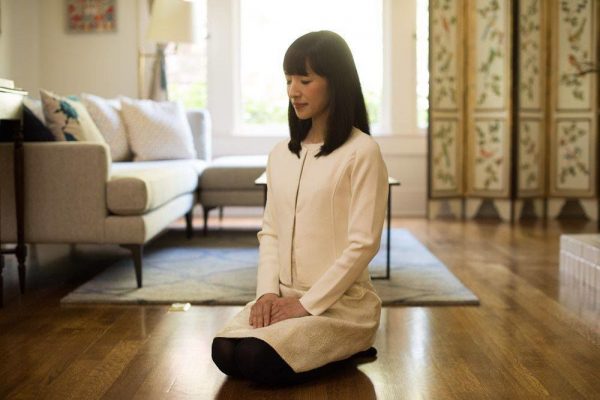
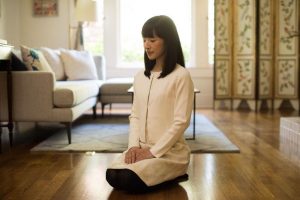
Storage Ideas
What Is The Marie Kondo Method?
Modified: March 19, 2024
Since 2016, the Marie Kondo method has been making waves across the globe, even leading to its own Netflix adaptation. Why does it work? Find out inside.
(Many of the links in this article redirect to a specific reviewed product. Your purchase of these products through affiliate links helps to generate commission for Storables.com, at no extra cost. Learn more)
I’ll do you one better – why is the Marie Kondo Method? Yes, why indeed?
There’s plenty of information on the internet regarding the how and what of the Marie Kondo method. A quick Youtube search pulls up multiple Marie Kondo-inspired videos, and there are numerous articles explaining what it’s about as well. But have you really ever wondered why it works so well?
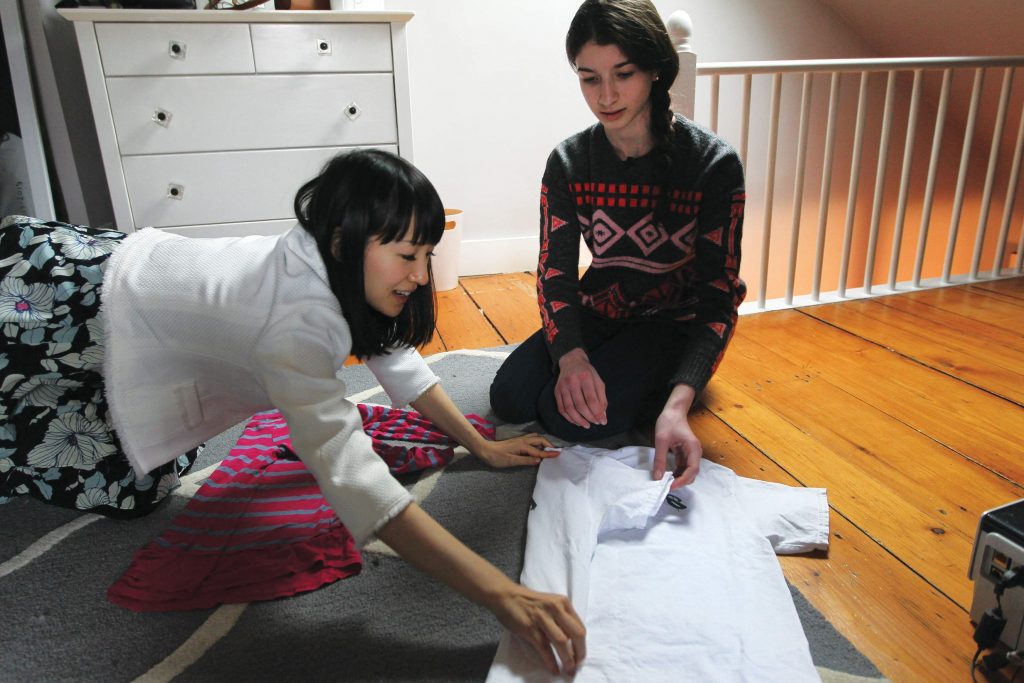
The KonMari method consists of basic rules to guide you through de-cluttering sessions, and towards a tidier environment in the long run. These rules are also what will help you gain happiness and peace; it’s advisable to follow them to get the most out of this experience. The method also allows categorization to take place, thus further helping you with organizing. This helps to provide a general sense of direction, allowing you to focus so you can do better.
What sets the Marie Kondo method apart from numerous quick organizing fixes out there is that her method is super simple and yet sparks happiness and promotes long-term change using the principle of gratitude. She’s not a happiness/motivational speaker but her method does promote happiness.
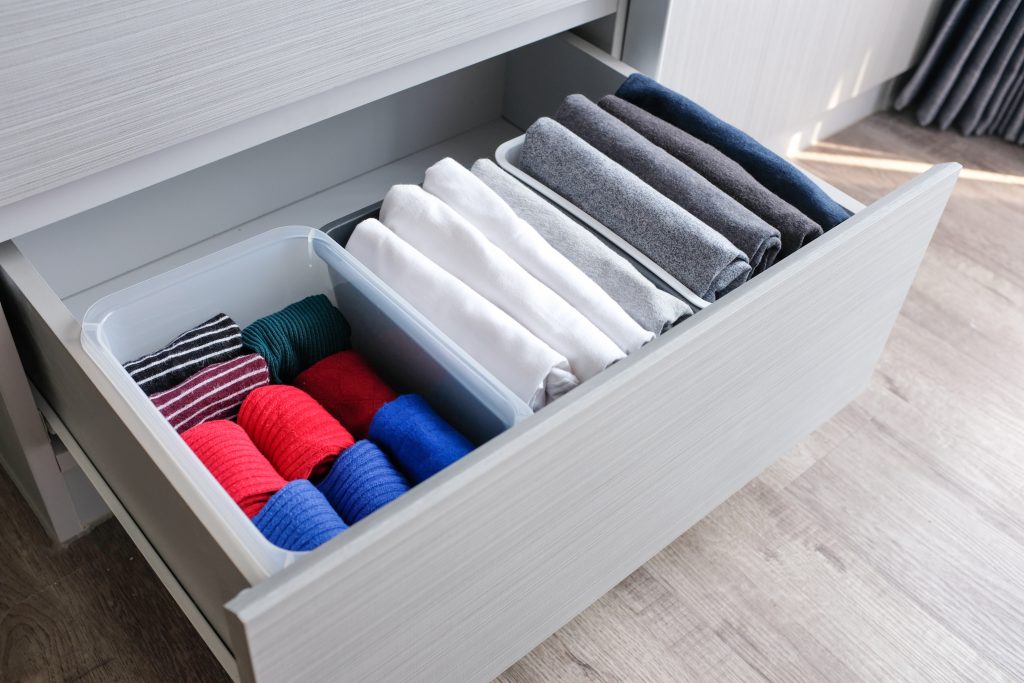
Marie Kondo is currently considered the most sought after decluttering and organizing guru not merely in Japan, but worldwide. Through it, every mundane and/or stressful task can potentially be turned into a happy and fulfilling experience. Freedom and happiness is where the KonMari method excels. Let’s break it further to find more about why the KonMari method brings happiness to those who use it.
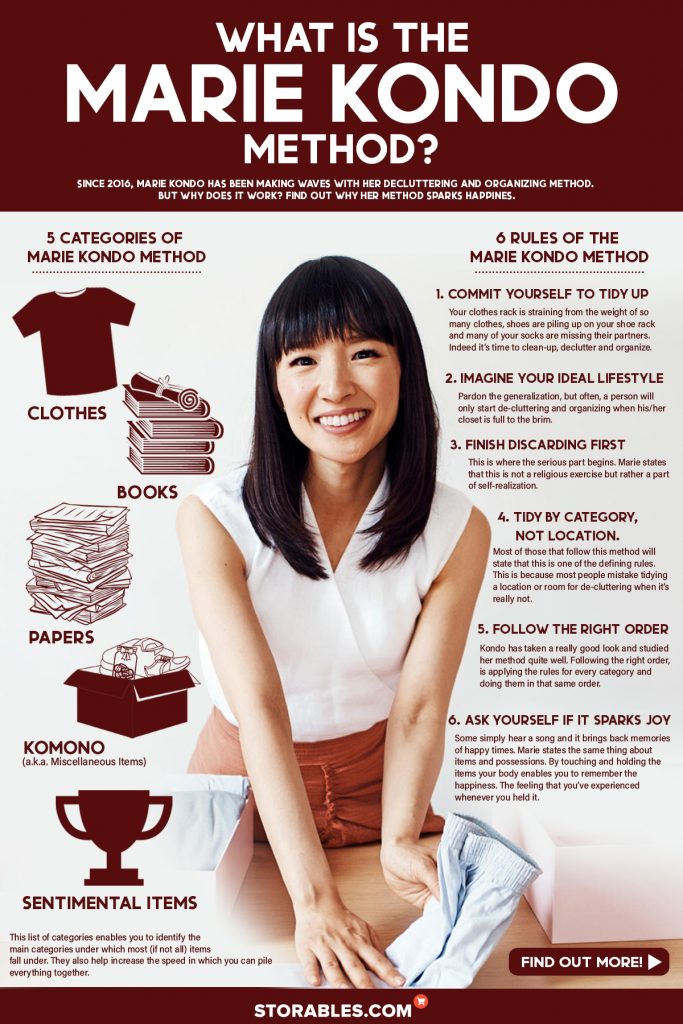
The 5 categories of the Marie Kondo method are:
- Clothes
- Books
- Papers
- Komono (a.k.a. Miscellaneous Items)
- Sentimental Items
This list of categories enables you to identify the main categories under which most (if not all) items fall under. They also help increase the speed in which you can pile everything together.
Kondo has already made these categories as self-explanatory as possible, but you can further break them down. Komono or miscellaneous items, for example, are small items that can be further divided into smaller piles. Followers of Marie Kondo’s method have created lists by which to know which item goes where (refer to chart below).
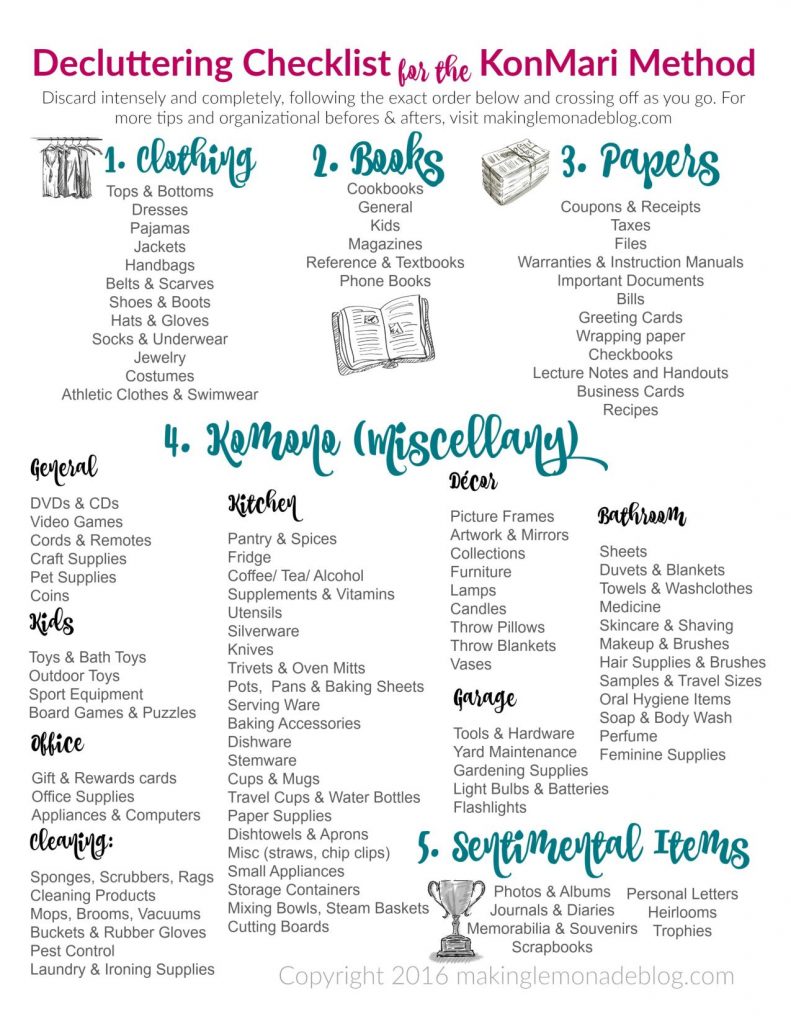
Photo credit: KonMari list from makinglemonadeblog.com
6 Rules Of The Marie Kondo Method
Read more: How To Store Belts by Marie Kondo
1. Commit yourself to tidy up
Your clothes rack is straining from the weight of so many clothes, shoes are piling up on your shoe rack and many of your socks are missing their partners. Indeed, it’s time to clean-up, declutter and organize.
Enter the first hurdle: commitment. Because of the time and effort it involves, people tend to be wary of commitment and may even avoid it actively. Even if evidence is (literally) jumping out of your closet doors, a person can always come up with a reason/reasons not to take any form of action.
Being the first and hardest obstacle, the KonMari method placed this at the very start of her rules. This is what stumps people from starting their task in the first place. That is why you should commit first to tidying up. She eases your burthen by explaining you don’t have to overwhelm yourself. You could just begin with one category then move on as time permits. The experience itself should start to provide you with a release and ease you into being happy.
2. Imagine your ideal lifestyle
Pardon the generalization, but often, a person will only start de-cluttering and organizing when his/her closet is full to the brim. The other possible scenario is the occurrence of a life-changing event, such as the demise of a loved one or moving away from home: such events force you to re-evaluate yourself, your lifestyle, and your possessions.
There’s no better time than now for you to imagine the future and what you wish it to be like. Imagine the lifestyle that you’d have in the near future and how your new surroundings would fit into it. Do you aspire to set up your own company, or get a raise at your current job? Are you looking to adopt a pet, or create a cozy space for karaoke sessions at home? What kind of lifestyle do you envision for yourself, 1, 5, or 10 years from now?
Why should you do this? Because this will provide you with the inspiration to further commit. You’re encouraged to act with passion on your de-cluttering and organization. This exercise will also help you envision the outcome of your hard work as you clean up.
3. Finish discarding first
This is where the serious part begins. Marie states that this is not a religious exercise but rather a part of self-realization. Be mindful of all your blessings and be thankful for all the things that you have. The house, the clothes, the books, and all the other items that you own.
This part is best experienced by taking one category of items and dumping all of it in one pile. Then touching each item, hold them, then thanking each item for its service. This will not only assist you in letting go but it will help you realize which item to keep and which to discard.
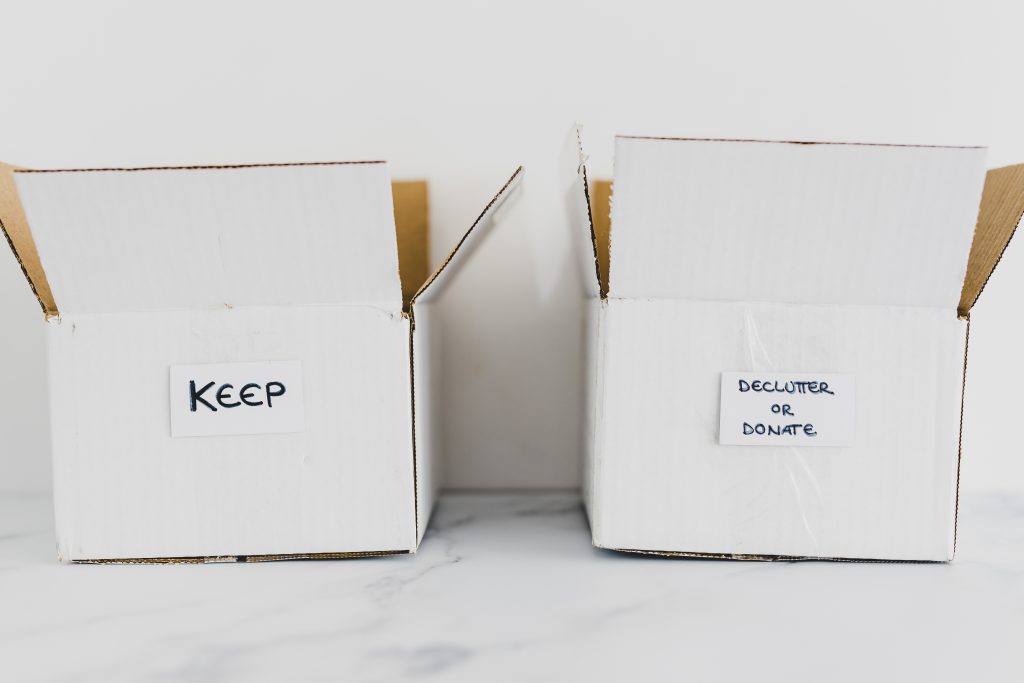
Segregation and discarding of items are the hardest part of de-cluttering and organizing. Most people don’t realize it but they don’t actually discard their unused items – most will simply segregate them and store them in some obscure corner. Kondo states that you must be firm about this rule and discard those that are of no use anymore. Only then will you be able to see the reasons why some of your items are needed.
“Before getting rid of items, sincerely thank each item for serving its purpose”. This will provide a proper state of mind or closure for the items that you are discarding. Sometimes ending a relationship, even with an inanimate object, is painfully hard. But that final act of separation will lead to your feeling of freedom.
4. Tidy by category, not location.
Most of those that follow this method will state that this is one of the defining rules. This is because most people mistake tidying a location or room for de-cluttering when it’s really not. Most of the time, people are simply moving things around and hiding their stuff in random nooks and crannies.
Tidying by category, on the other hand, is a far more objective process that provides a person with a better perspective of his/her possessions. By simply piling up all of your items with the same category, you’ll be able to identify duplicate items, lost items and even those that you’ve poorly maintained. This will enable you to easily identify each item within a particular group or category.
Read more: How To Store Handbags By Marie Kondo
5. Follow the right order
Kondo has taken a really good look and studied her method quite well. Following the right order, is applying the rules for every category and doing them in that same order.
Essentially what this means is, if you are not trying to de-clutter and organize a certain space, you should follow the categories step by step. Starting from clothes, books, papers, komono (miscellaneous items) and lastly sentimental items.
This will not only provide an order by which you could follow. This will also relieve you of the burden of thinking where to start. This rule will greatly simplify the whole process of de-cluttering. This will also provide a general guide to follow.
There’s a practical reasoning for these steps. Your clothes do provide happiness but most of the time it’s temporary. While sentimental items are often harder, if not, almost impossible to discard. Thus you can simply see that in both situations which would take longer for a person to segregate.
Do your best to find which to discard and which to keep, for every step. Organizing will then be very easy to do.
6. Ask yourself if it sparks joy

Some simply hear a song and it brings back memories of happy times. Marie states the same thing about items and possessions. By touching and holding the items your body enables you to remember the happiness. The feeling that you’ve experienced whenever you held it.
Was this page helpful?
At Storables.com, we guarantee accurate and reliable information. Our content, validated by Expert Board Contributors, is crafted following stringent Editorial Policies. We're committed to providing you with well-researched, expert-backed insights for all your informational needs.
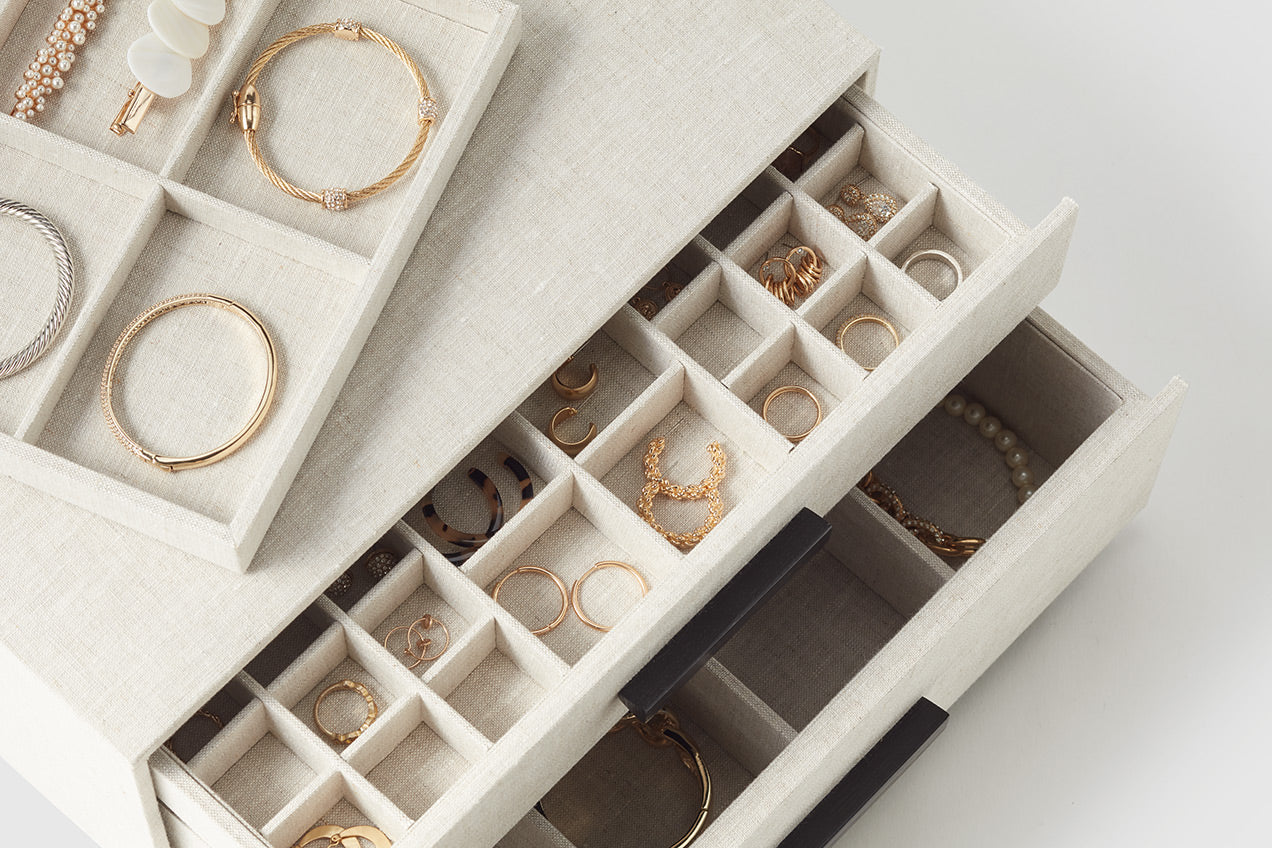
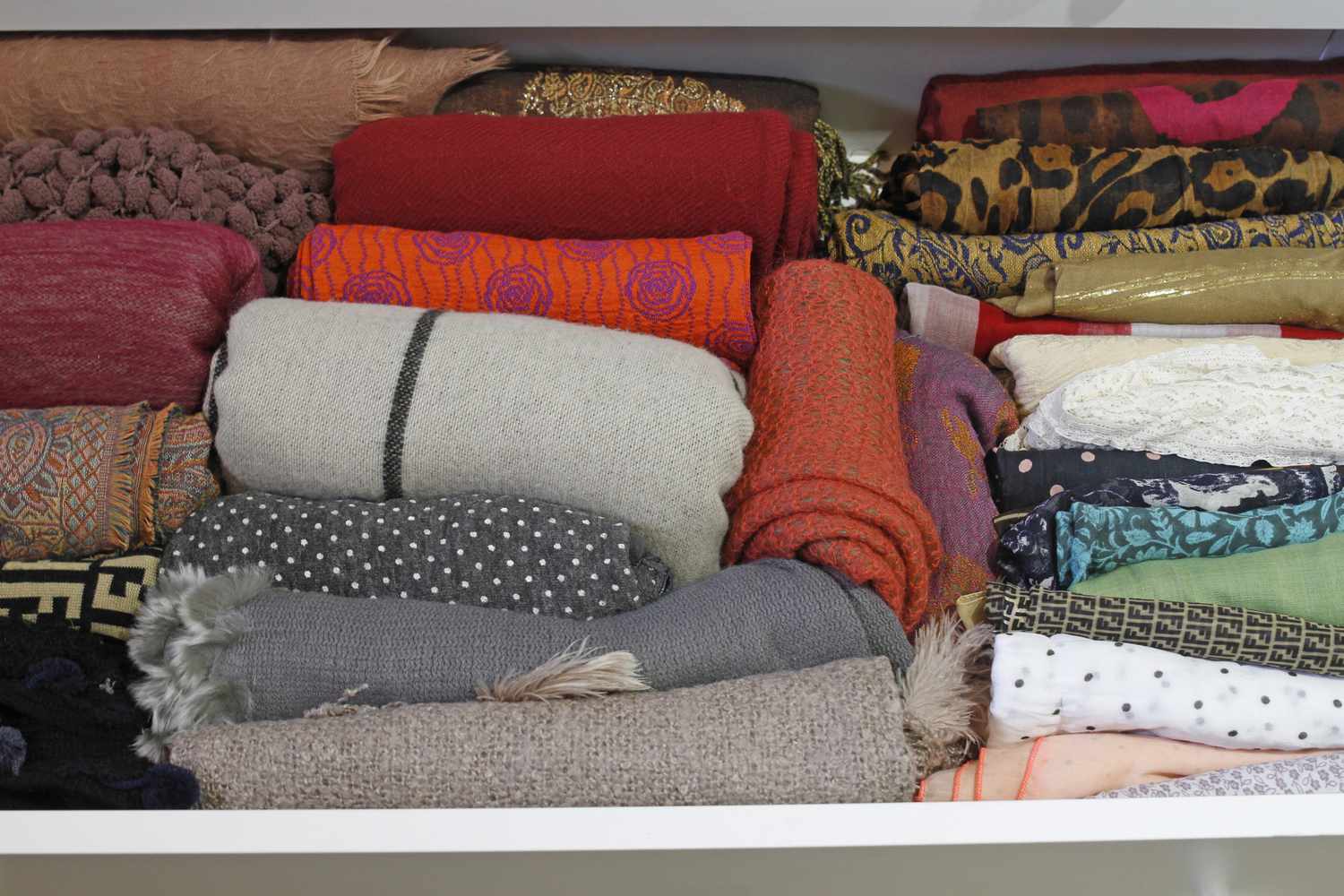

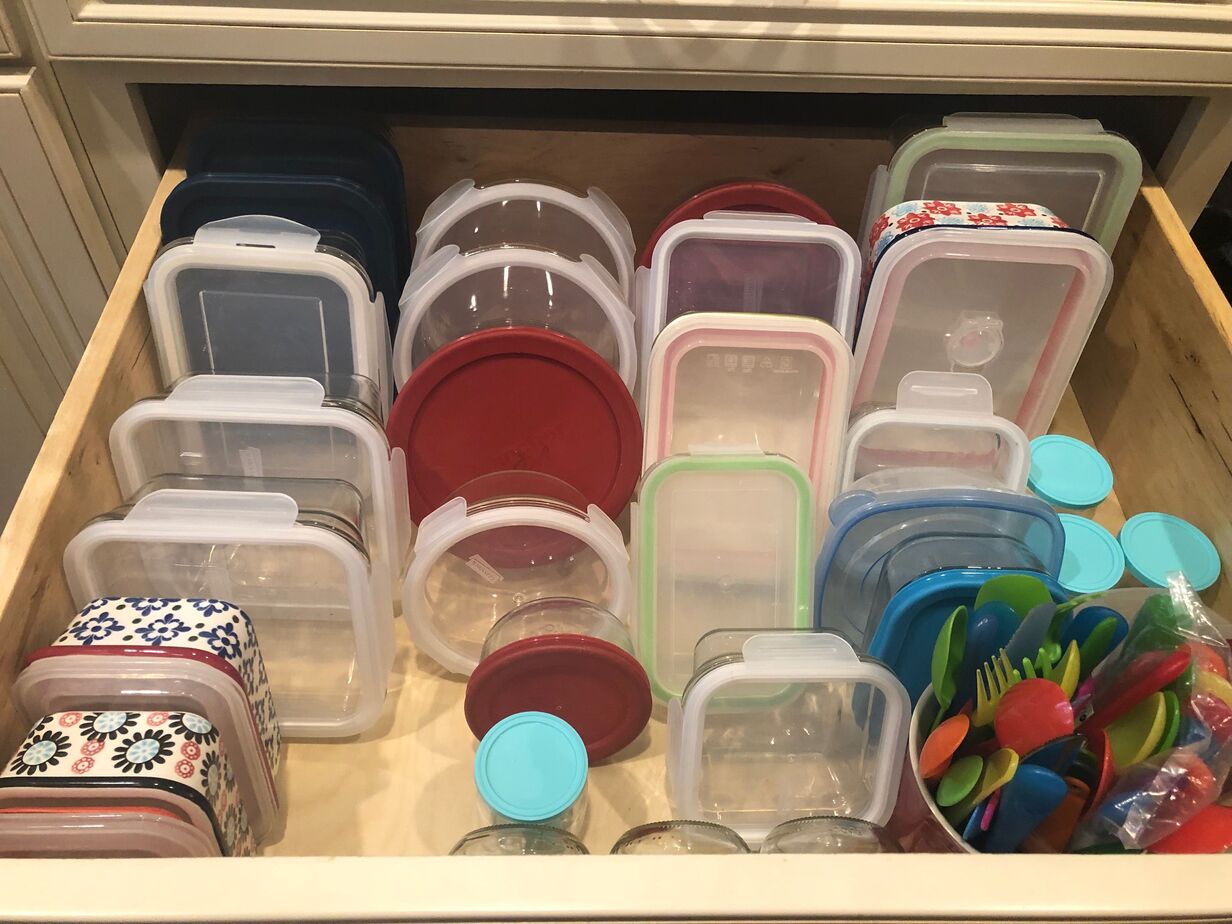
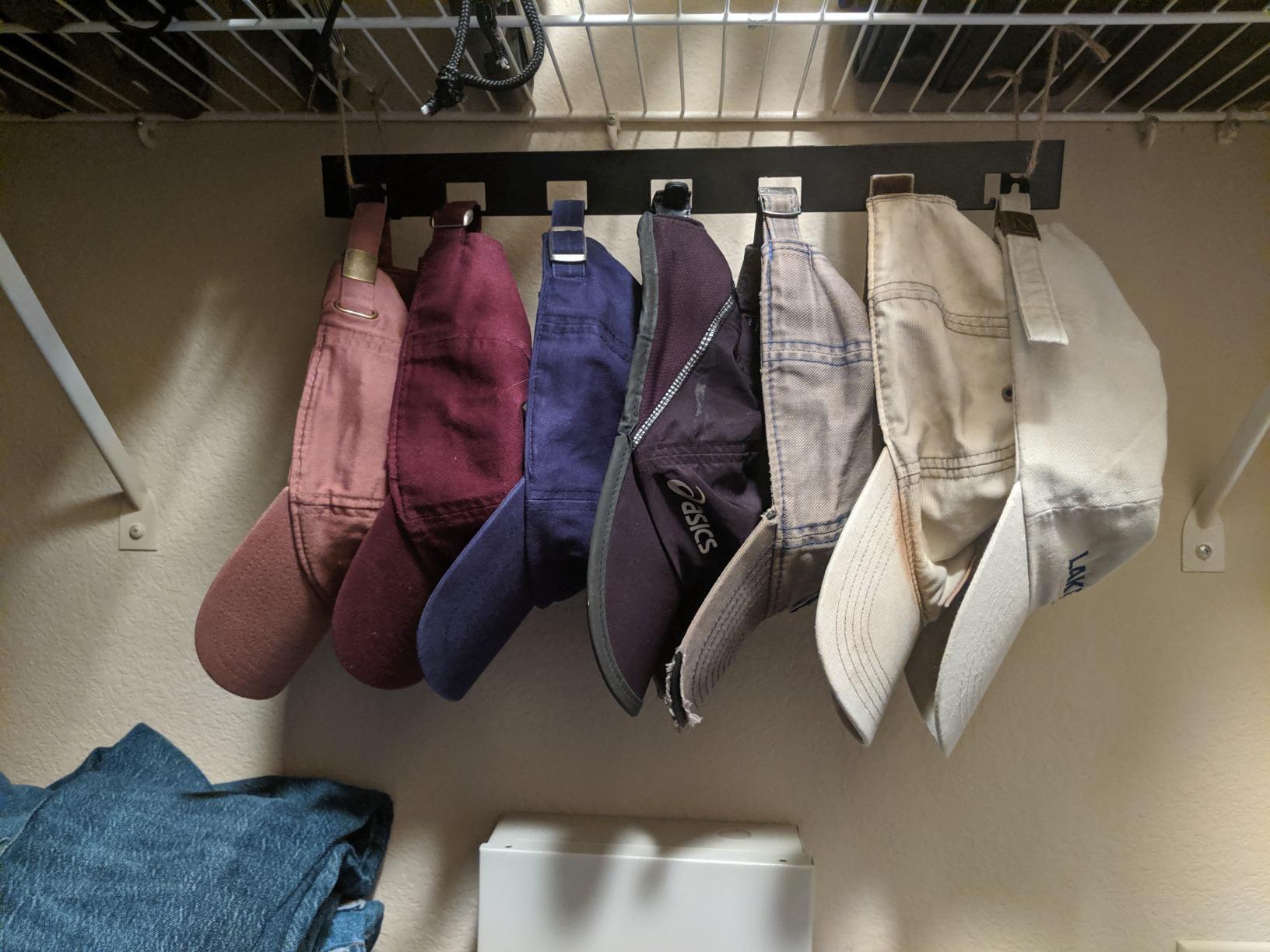
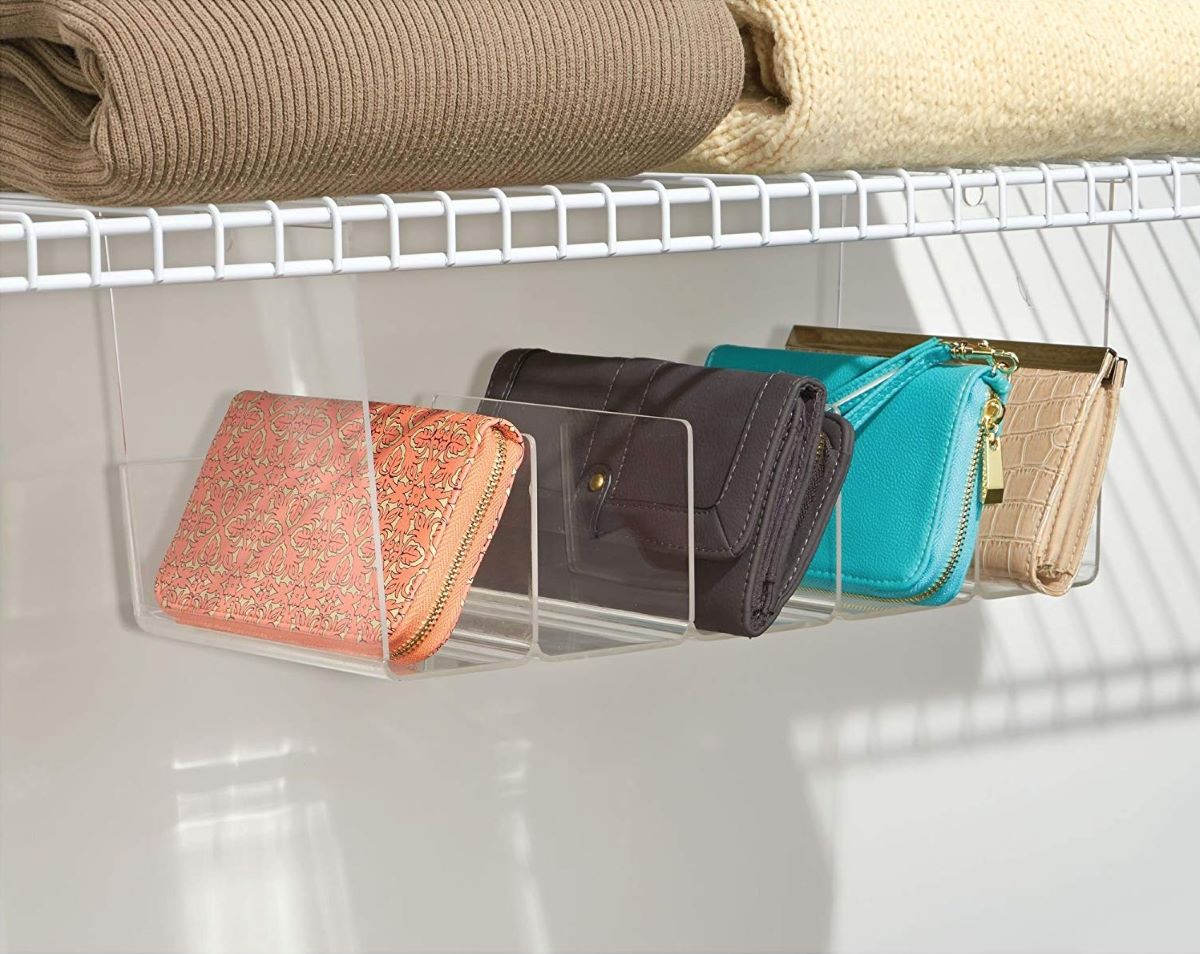


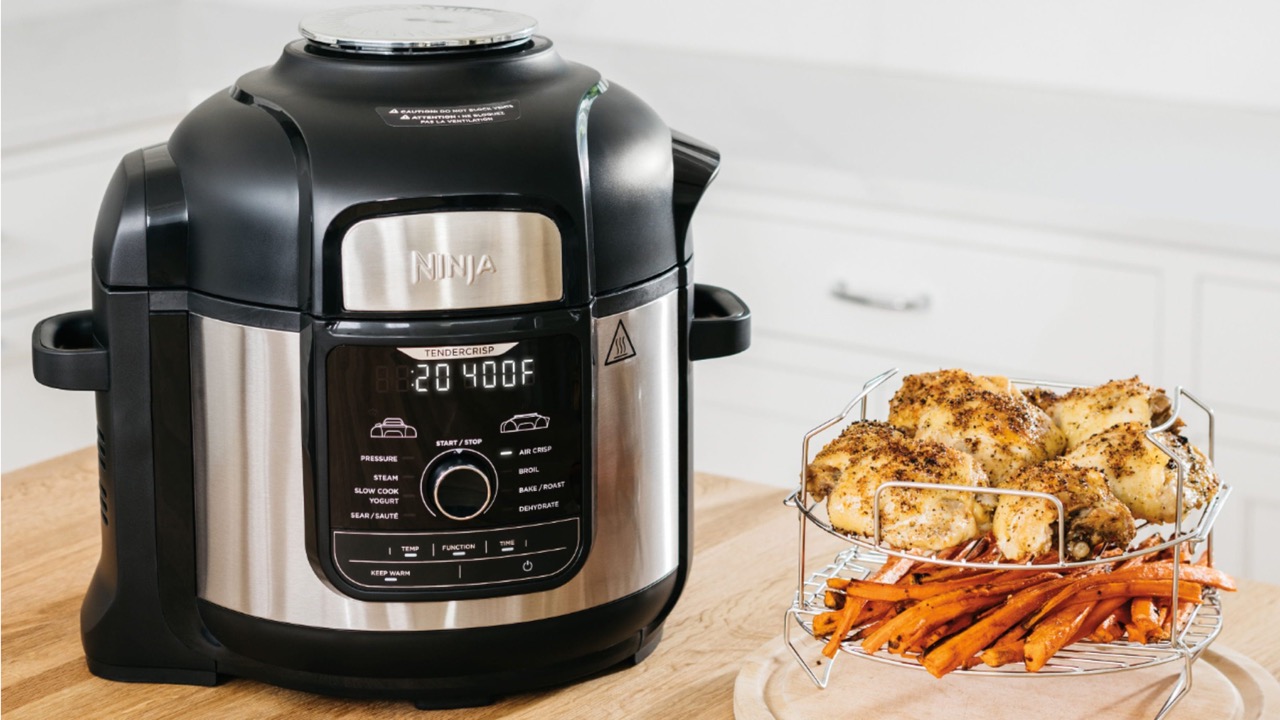
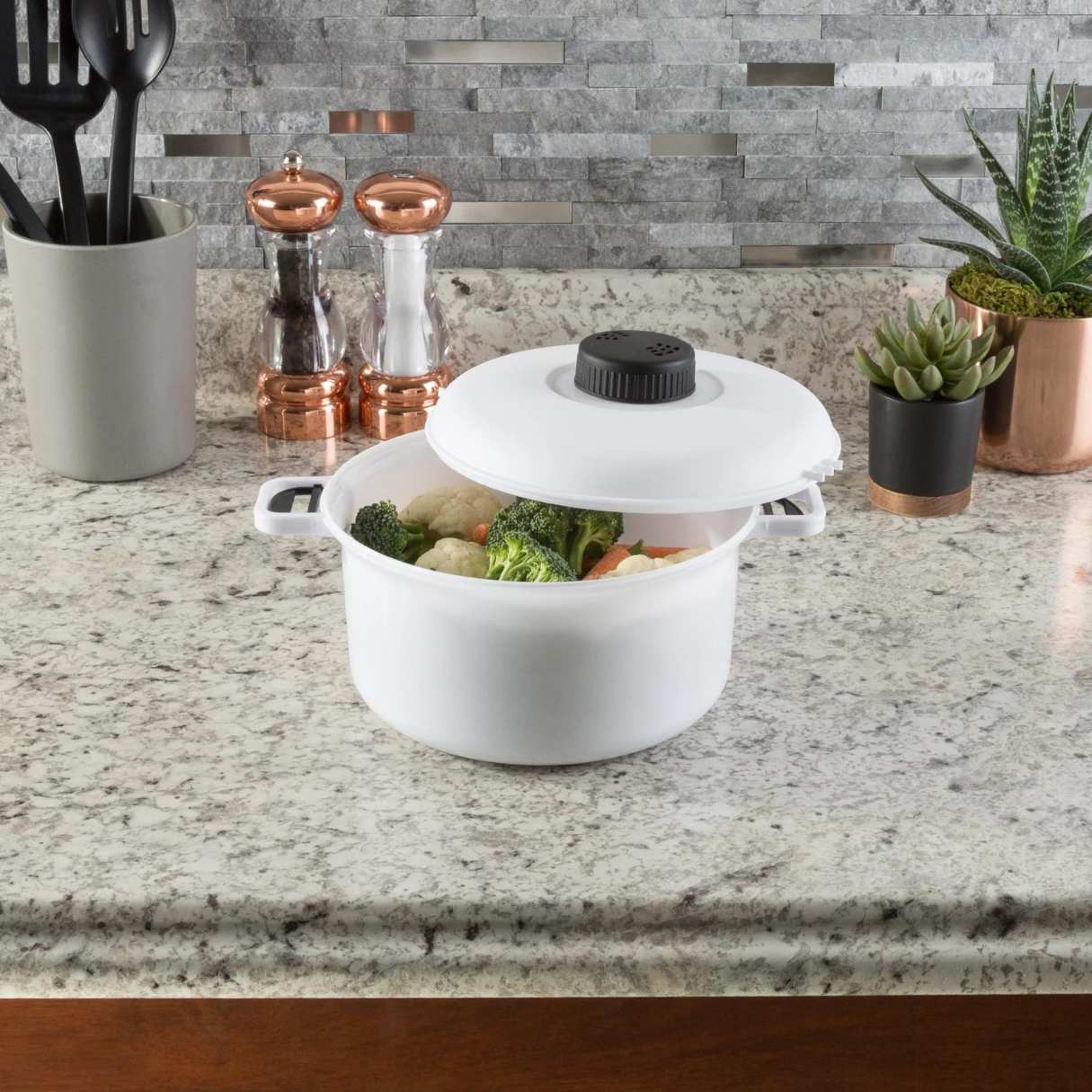

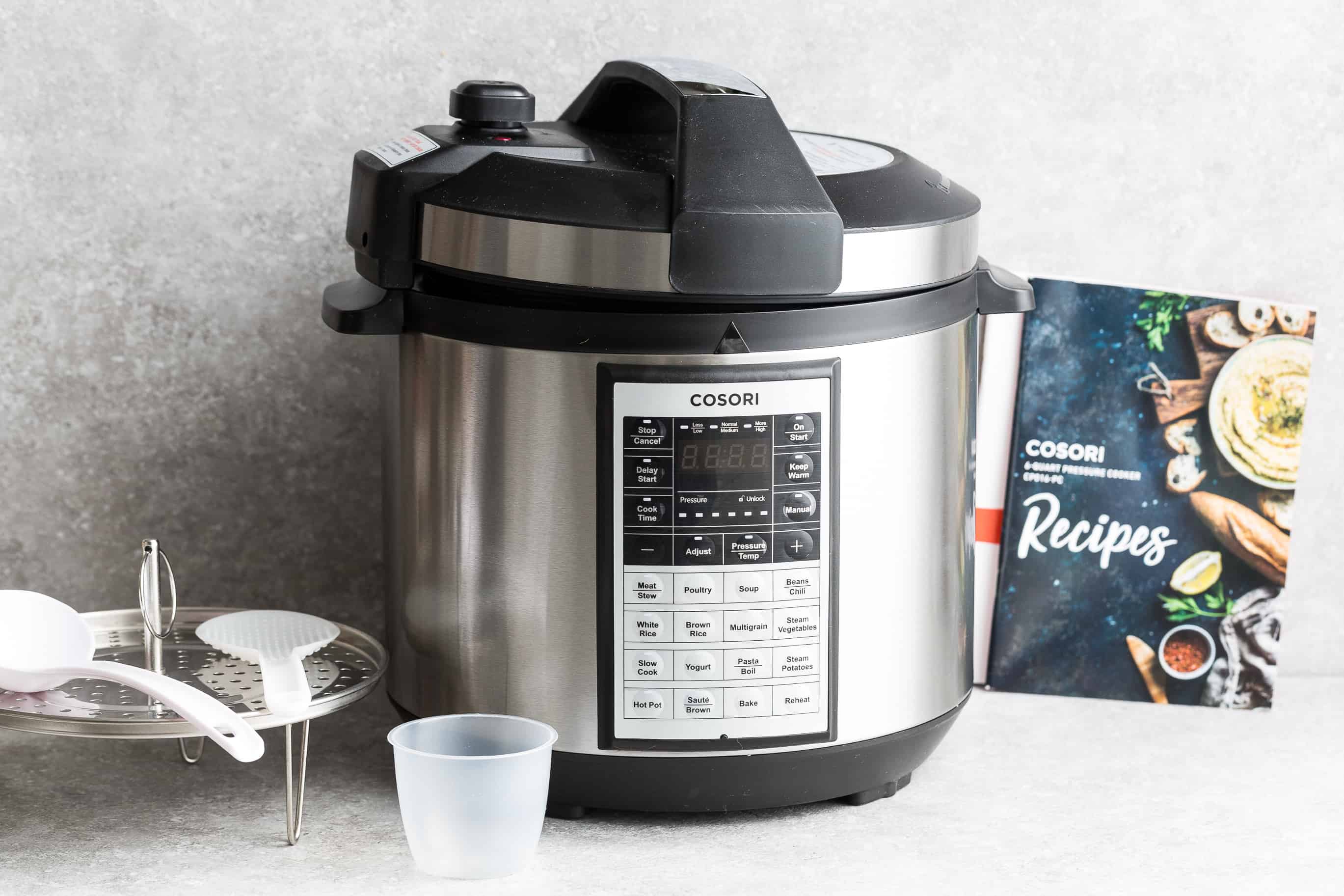
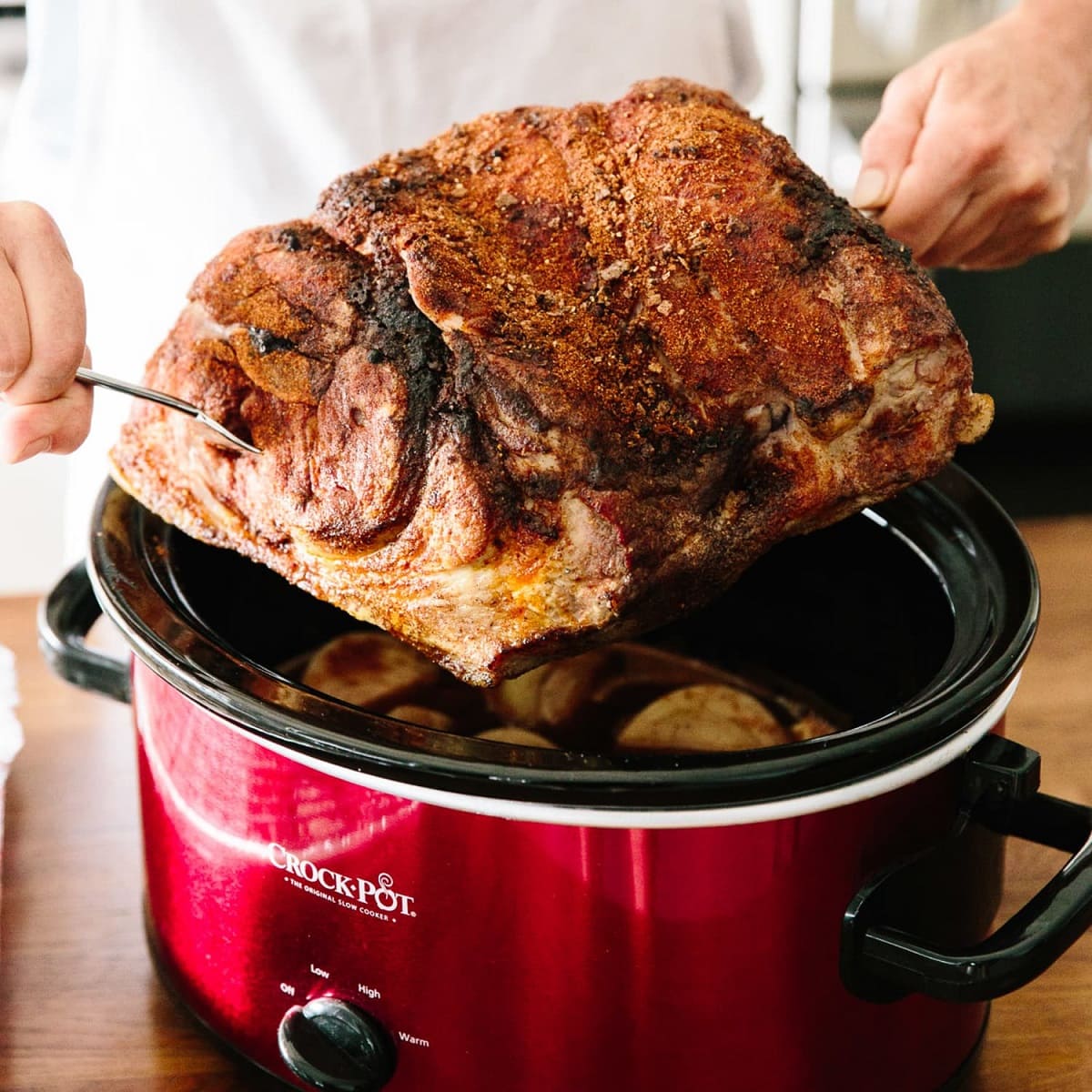


0 thoughts on “What Is The Marie Kondo Method?”